Asustor AS6204T Braswell NAS Review
by Ganesh T S on November 5, 2015 8:00 AM ESTSingle Client Performance - CIFS & iSCSI on Windows
The single client CIFS and iSCSI performance of the Asustor AS6204T was evaluated on the Windows platforms using Intel NASPT and our standard robocopy benchmark. This was run from one of the virtual machines in our NAS testbed. All data for the robocopy benchmark on the client side was put in a RAM disk (created using OSFMount) to ensure that the client's storage system shortcomings wouldn't affect the benchmark results. It must be noted that all the shares / iSCSI LUNs are created in a RAID-5 volume.
The Asustor AS6204T provides acceptable performance in all workloads without particularly standing out in any particular one. That said, it manages to be in the top half of the performance pack in almost all of them.
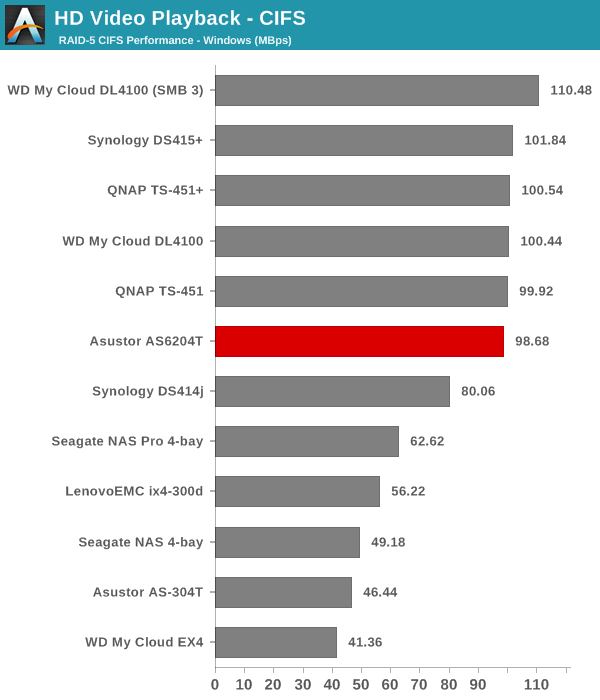
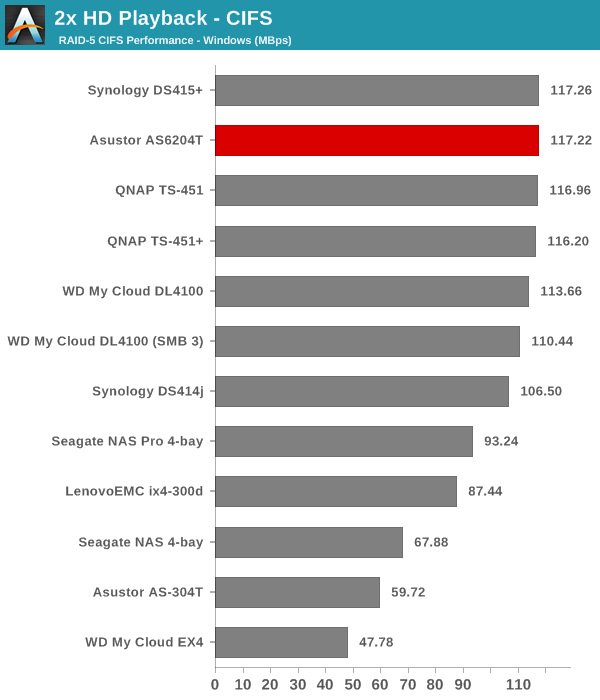
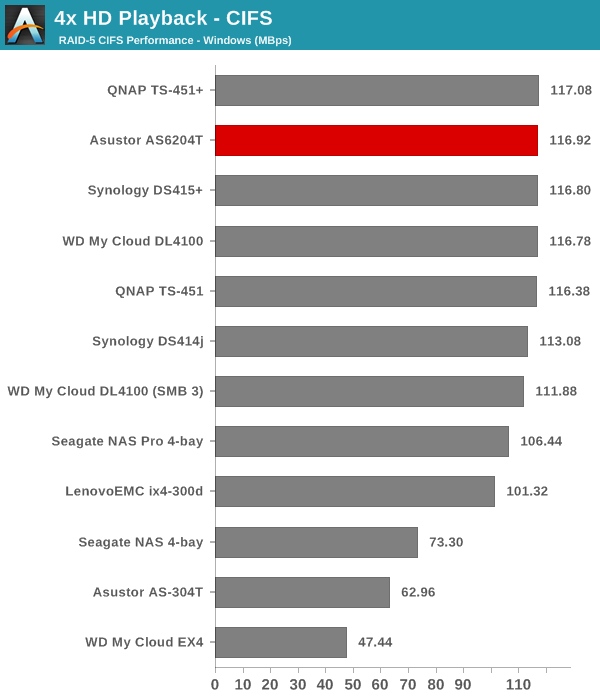
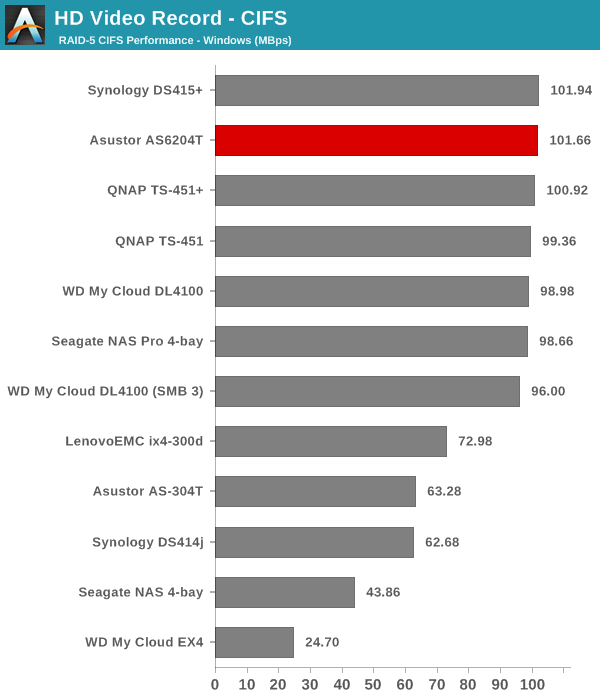
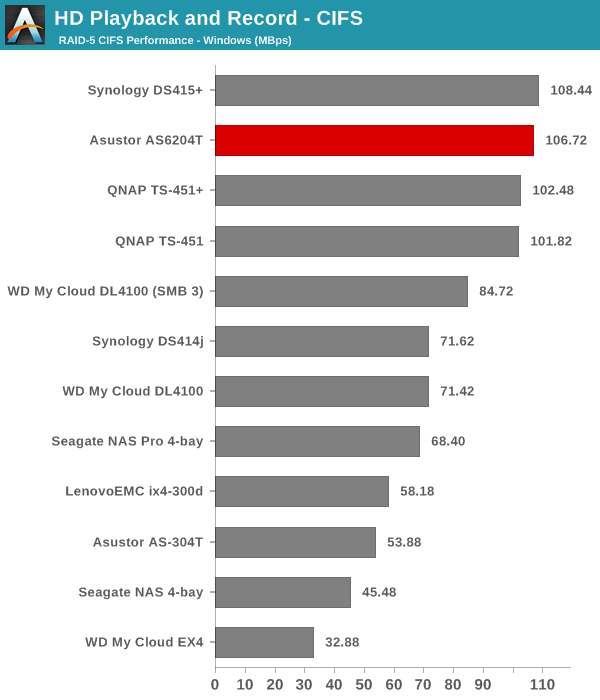
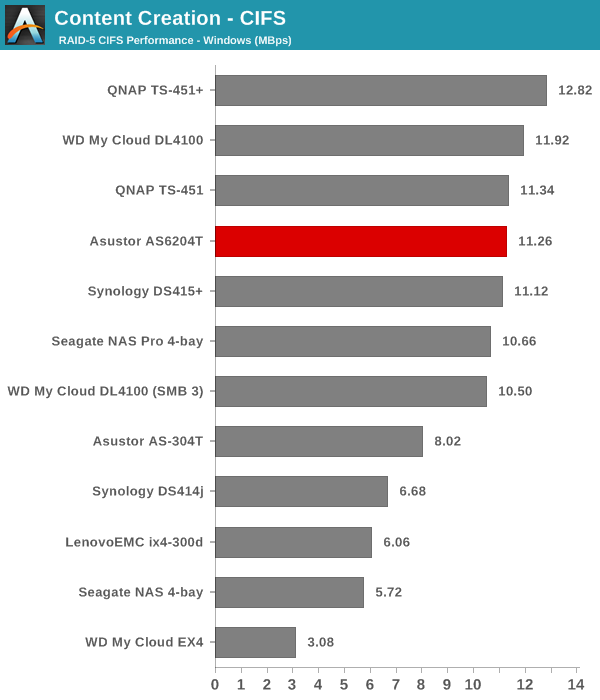
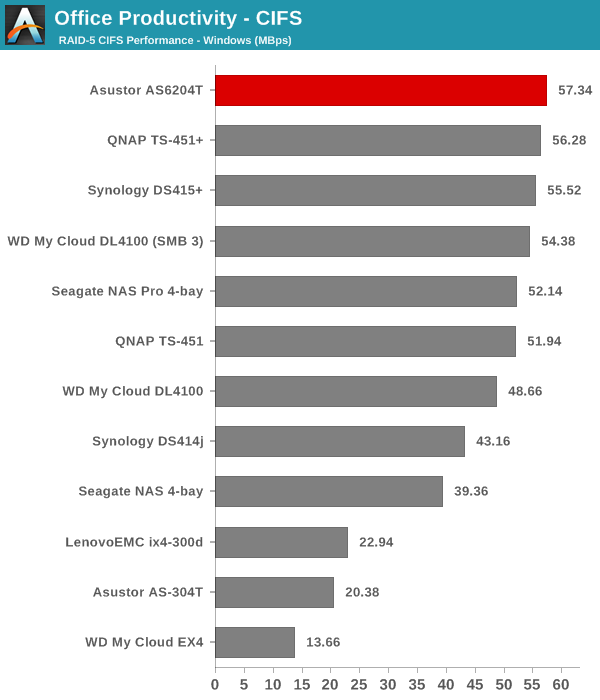
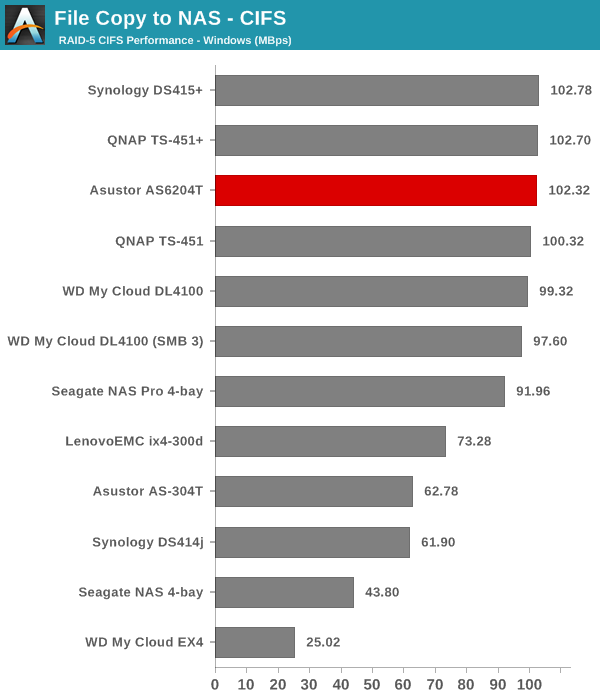
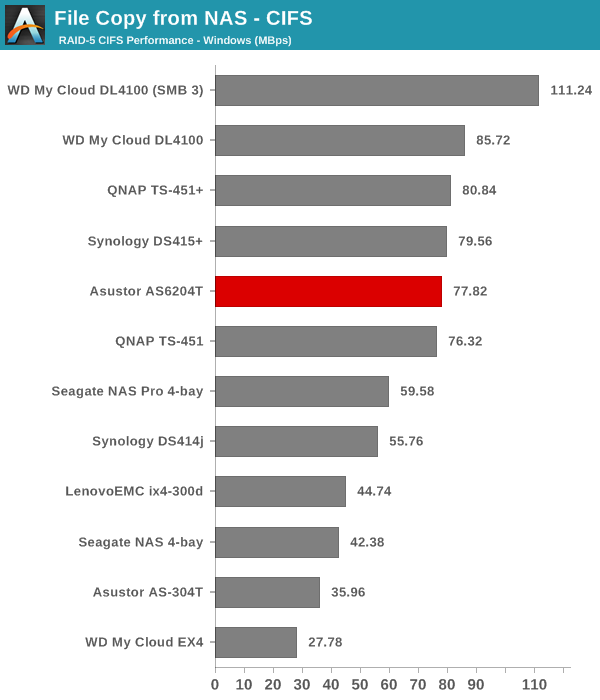
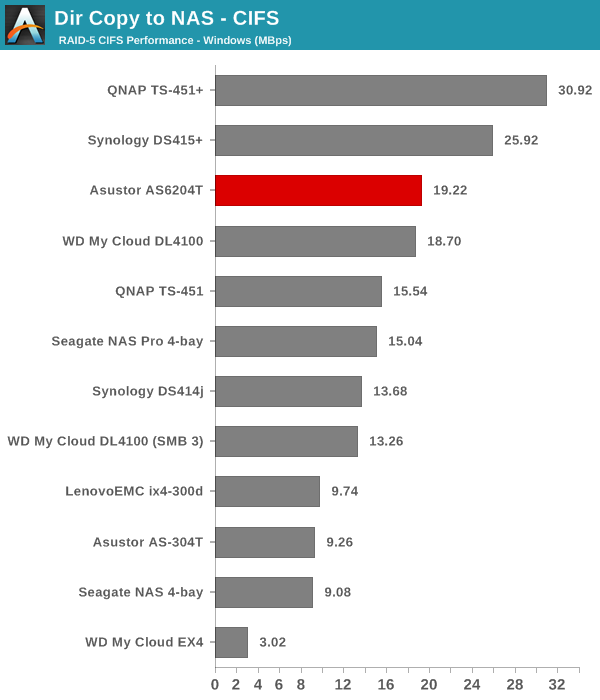
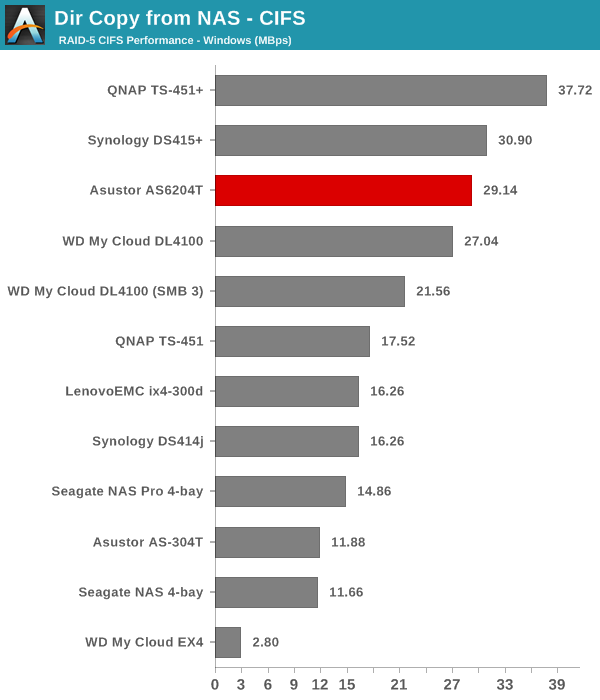

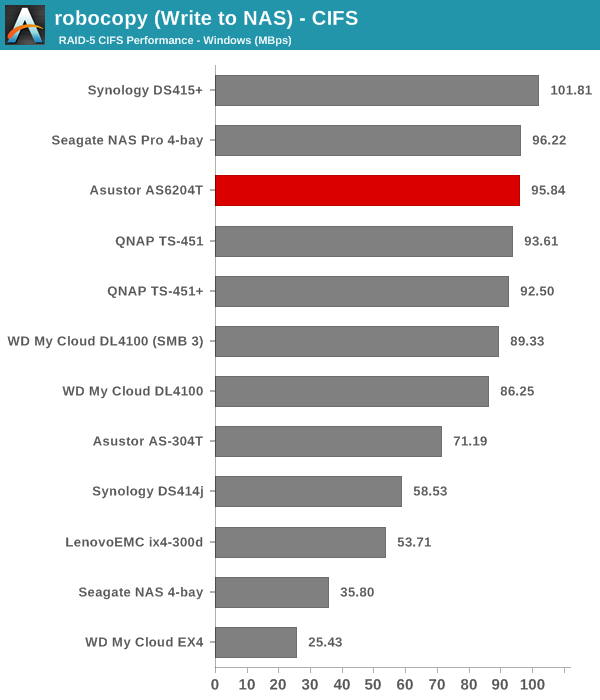

We created a 250 GB iSCSI LUN / target and mapped it on to a Windows VM in our testbed. The same NASPT benchmarks were run and the results are presented below. The iSCSI performance is slightly better than CIFS performance, but, again, nothing to make the unit stand out in the crowd.
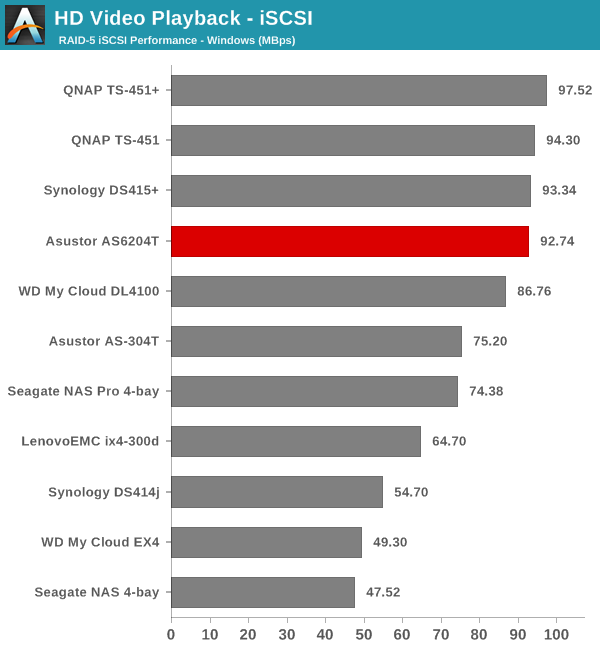
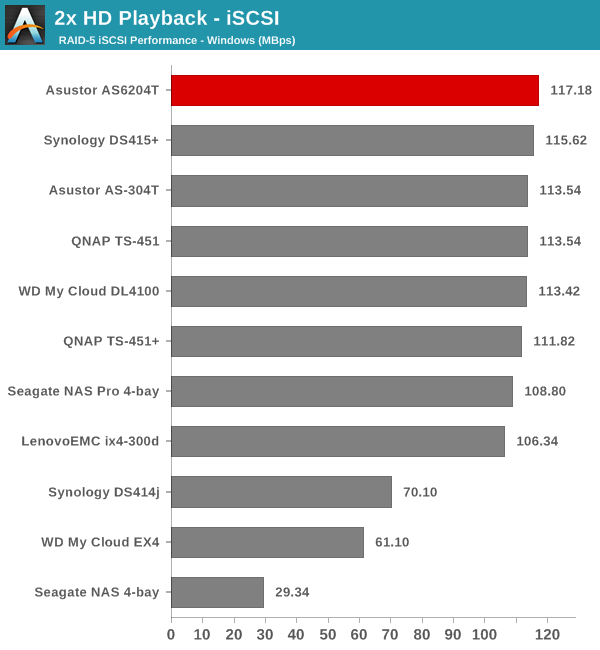
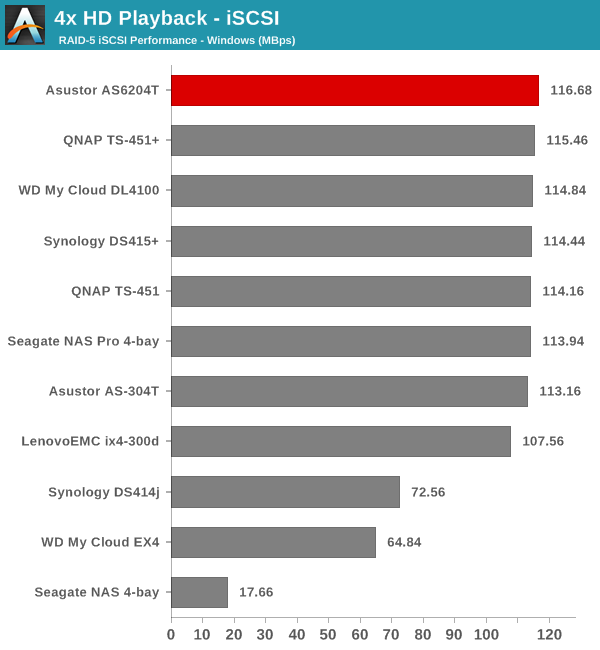
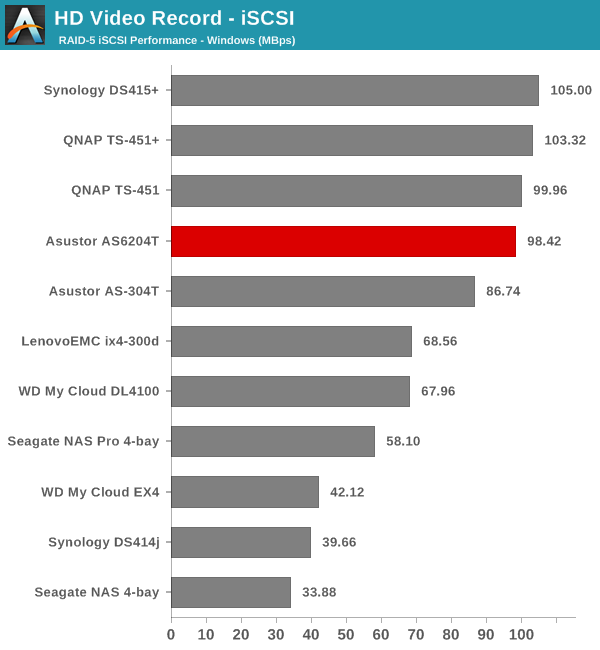
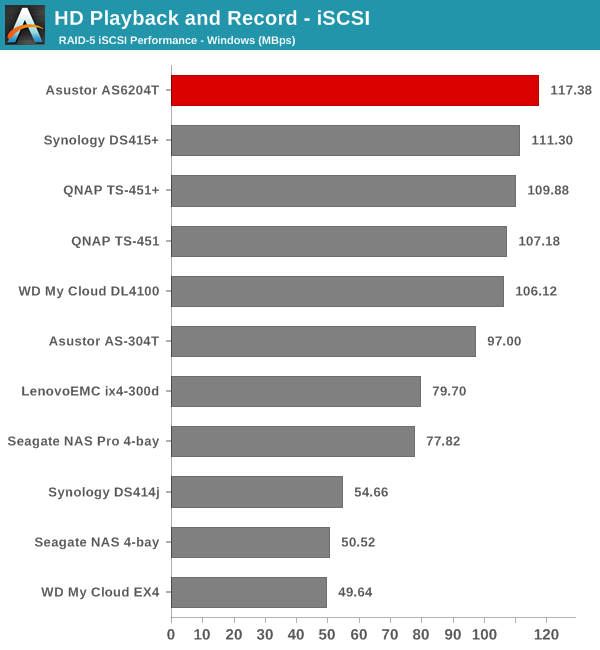
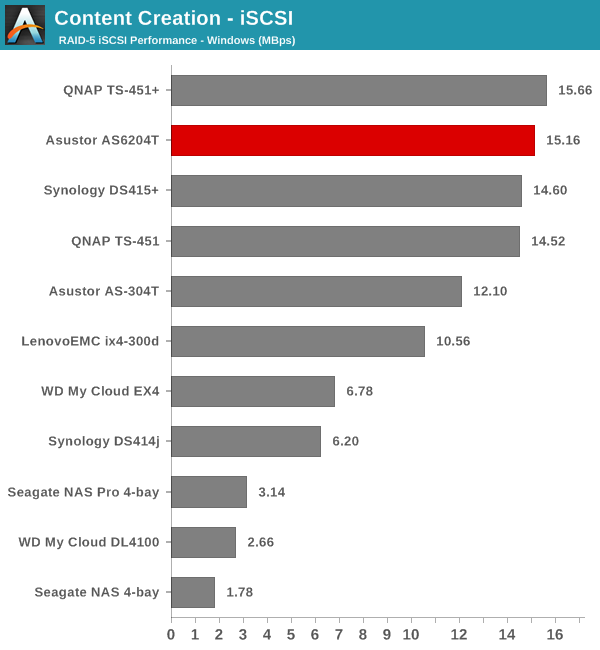

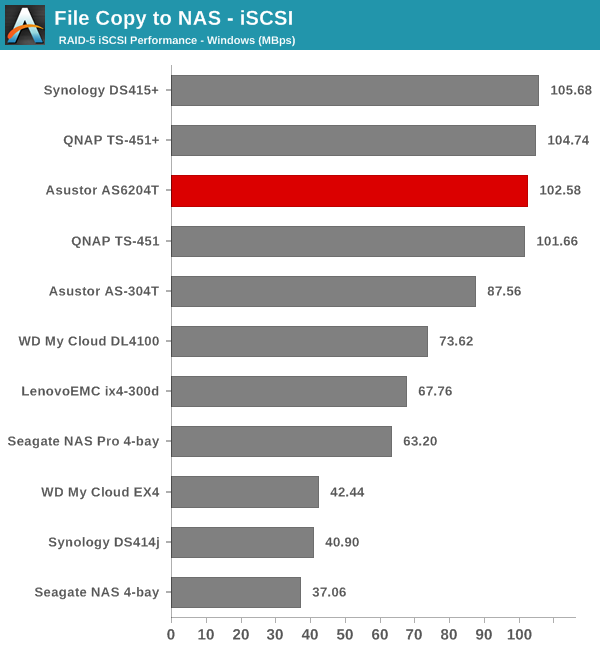


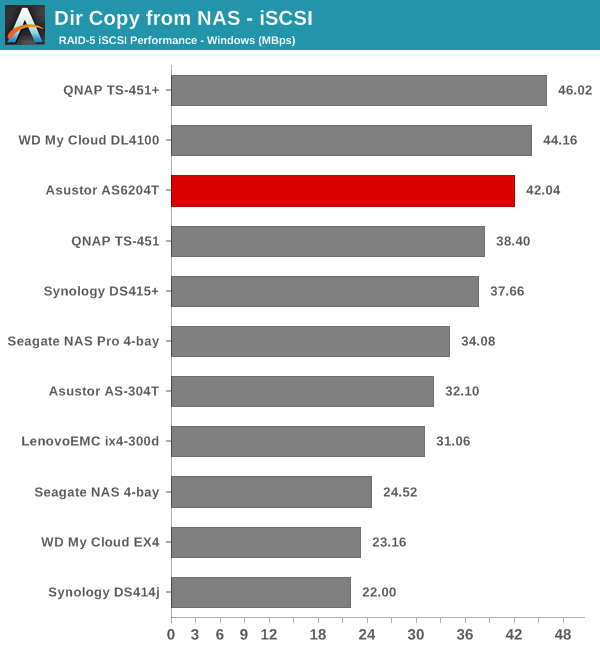

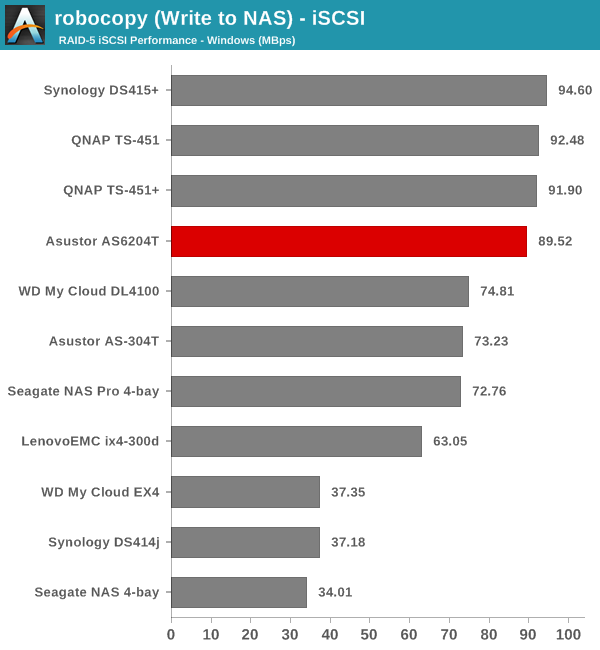
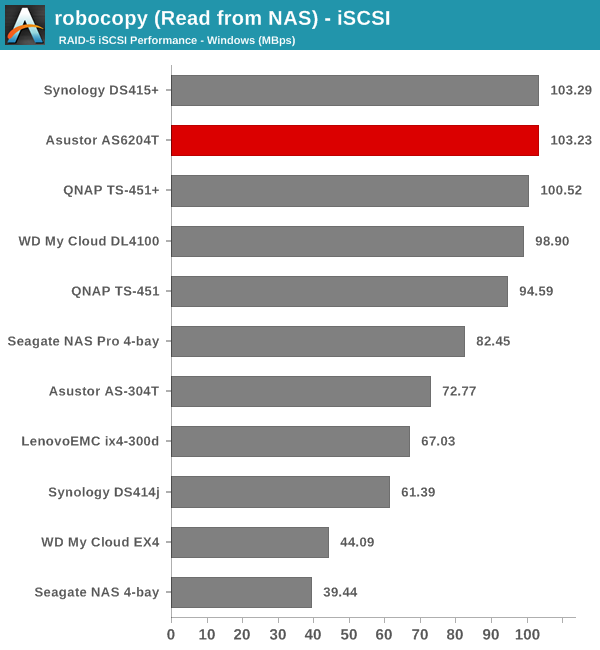
Both CIFS and iSCSI have scope for performance improvements. It has to be kept in mind that ADM (the Asustor OS) is still a fledgling compared to other mature operating systems such as QNAP's QTS and Synology's DSM. The important takeaway here is that the system provides acceptable performance for all the workloads.










29 Comments
View All Comments
RdVi - Thursday, November 5, 2015 - link
It's hard to compare the graphs on page 4 when the values on the axis vary (sometimes wildly) between the two. Flicking back and forth it is very hard to easily compare on face value. Would it not be possible to have the scale locked to whichever graph approaches the highest value?ganeshts - Thursday, November 5, 2015 - link
The issue here is that these graphs are generated on a per-review basis - i.e, the graph that you see for the QNAP TS-451+ was generated at the time of writing the QNAP TS-451+ review. At that time, the Asustor AS6204T hadn't been evaluated, so it is not possible to know ahead of time what the highest value is going to be.I think we have the best possible solution here in the timeframe that can be devoted to the review - the other solution is to simply not have any graphs for the competing units (similar to what we did for the QNAP TS-451+ review which was the first 4-bay one done with the new methodology).
DanNeely - Friday, November 6, 2015 - link
Are the graphs coming from the bench software itself? If there is a CSV export option generating combined comparison graphs (or rescaled stand alone ones) shouldn't be hard to do after the fact.ganeshts - Friday, November 6, 2015 - link
The bench software is written by me :) (except for the core trace replay component which is compiled from NASPT source). And, yes, the graphs are generated at the end of each benchmark run by my code.I don't have a CSV export option in the software yet, as I only export the HTML tables that are linked above each graph. So, yes, the data is there, but not in a format suitable for reprocessing with each new NAS run.
It is possible to implement CSV export and graph regeneration, but it is a matter of how much time I can spend to get the new code up and running. At this moment, I think the time cost far outweighs the benefits provided. I am currently working on optimizing our SPEC SFS testbed and benchmarking - I think that will provide more benefits to readers in the long run.
Oyster - Friday, November 6, 2015 - link
Ganesh, I mentioned this in some of your other NAS reviews. You need to review the software side of these vendors now. Would be awesome to see the biggies go head to head... Synology, QNAP, ASUS, and Lenovo. Please try to cover app offerings to other items like backdooring via SSH, etc.As usual, keep up the good work.
ganeshts - Friday, November 6, 2015 - link
Yes, it is in the works. The problem is that these are 'subjective' aspects and require more effort to use and record observations compared to objective benchmarking.MrElectrifyer - Saturday, November 7, 2015 - link
Curious how this compares to a QNAP TS-470 Pro...MrElectrifyer - Saturday, November 7, 2015 - link
So far, I know the TS-470 Pro can support more than 8GB of RAM...I upgraded mine to 10GB.WatcherCK - Monday, November 9, 2015 - link
Looks like disks get formatted internally to Ext4... The full specifications link seems to point back to the articles initial page was this by design? The full spec pdf for this NAS can be found here: http://www.asustor.com/service/resource?type=3&... (for a laugh check out what the display on the NAS is saying on its Asustor page, what do you know Asus? :) )Anyone considering a DIY NAS should checkout the new Asrock Rack C236 WSI that combined with a Silverstone DS380 would make for a powerful little storage box/virtualization server... They dont seem to be available anywhere yet unfortunately and Supermicro only have MATX C236 motherboards.